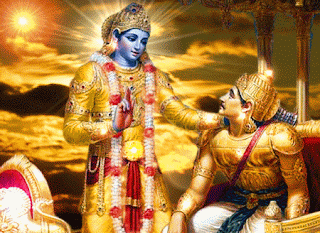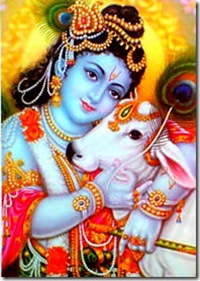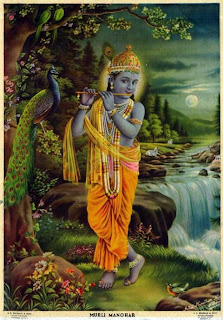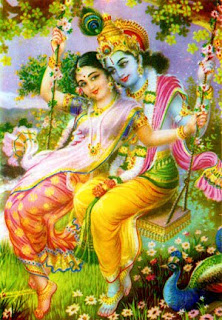Regarding the
sattvic bhao, I will tell you what I have understood from the writings and speeches of Shree Maharajji. The 8
sattvic bhao are as follows:
stambh (becoming motionless like a statue),
sved (sweating profusely),
romanch (goose pimples, or hairs standing on end),
swar bhed (choking of the voice or change in tone of voice),
vepathu (trembling),
vaivarnya (change in the complexion of the skin),
ashru (tears),
pralaya (unconsciousness). These are the physical manifestations of
bhao bhakti.
Bhao bhakti is only received through the Grace of a Saint by following his instructions for
sadhana bhakti and by serving him faithfully. As a devotee progresses, these
sattvic bhao become more intense, which is a sign that he is proceeding in the right direction. It is indeed a wonderful sign when these
sattvic bhao appear in the body, and it is the desire of every devotee for this to happen.
The precaution which I hear Shree Maharajji repeat is as follows: a devotee should not think that he is important or highly evolved just because he starts experiencing one or more of these
sattvic bhao. He should carefully maintain his humbleness. He should remember that he is experiencing these
sattvic bhao through the Grace of his Guru, not through any effort of his own, and the basis for his experience is his humble dedication to his Guru. The moment a devotee feels self-important, vanity has risen in his mind, and his humbleness is gone. When his humbleness is gone, then his experience of the
sattvic bhao will also cease. In order to maintain humbleness, Shree Maharajji advises to control the outer expression of these
sattvic bhao. Try your utmost to control your physical
bhao, so that no one notices you and you will not feel proud that, "Someone has seen me in
bhao, so now they know what a great devotee I am..."
To help maintain humbleness you can also remember that a Saint shows the same 8
sattvic bhao from his body, but those a Divine
sattvic bhao. Let's say that Saint and a devotee are sitting in the
kirtan and both are crying tears for Krishn. Both are crying the same amount of tears. The power behind the Saint's tears will be unlimited times greater than those of the devotee. Then why is the devotee crying the same amount of tears? Because along with an increase in the intensity of the
sattvic bhao, the ability to control them also increases. So it means that you cannot judge the greatness of a devotee by how many tears he cries (or other
sattvic bhao). A Saint may be holding the ocean of Divine love in his heart and only allowing a few tears to escape, whereas the devotee may be experiencing a low intensity of
bhao and be unable to control it, thus tears are flowing copiously.
So even if we are unable to control our tears or other
sattvic bhao, we should remember that we are just entering the beginning stages of
bhao bhakti and we still have a lot of work to do. People from higher stages of
bhao bhakti have fallen due to their vanity, so we should not allow self-importance to creep into our mind just because we have experienced a little bit of
sattvic bhao. We should try with full force to control our physical expressions of
bhao and be thankful to our Guru for Gracing us with the experience of
bhao bhakti. Then we will continue to receive his Grace and we will continue to progress higher and higher on the path to God realization.
Swami Nikhilanand, JKP
Radha Madhav Dham. © 2011. All rights reserved.













